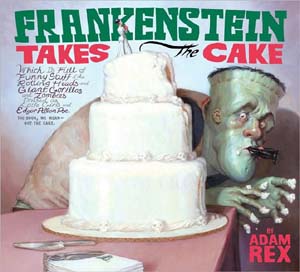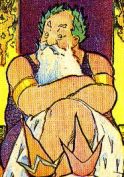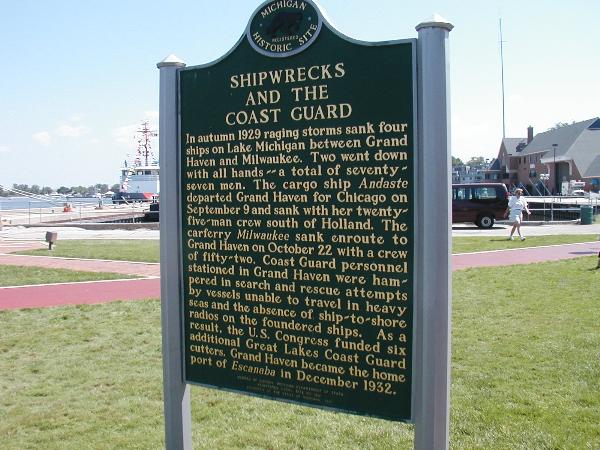





Spring Lake, meet Winsor McCay. McCay fans, meet Spring Lake.






 Alongside Winsor McCay, another of my favorite illustrators is Adam Rex. While perusing his book Pssst, I thought I sensed a McCay vibe in his drawings. Today I stumbled across further evidence that he is indeed a McCay fan of some sort -- he's got a cat named Little Nemo. Which is Great! Because now I have an excuse to celebrate some of Adam's work here on our McCay-themed blog...
Alongside Winsor McCay, another of my favorite illustrators is Adam Rex. While perusing his book Pssst, I thought I sensed a McCay vibe in his drawings. Today I stumbled across further evidence that he is indeed a McCay fan of some sort -- he's got a cat named Little Nemo. Which is Great! Because now I have an excuse to celebrate some of Adam's work here on our McCay-themed blog...





Years ago I had asked someone at the Tri-Cities Museum if there was any way to know where McCay might have lived -- or even to determine a geographic location where we could say he had definitely been. She said she highly doubted it because the layout of Spring Lake is very different now because so many fires had destroyed the town since McCay's time. The fires had also destroyed most records from those days.That post then went on to relay how excited we were to discover the site of McCay's former school... A plot of land right next door to the current site of the Spring Lake District Library:




Robert McKay, Winsor McCay’s father, came to Spring Lake to work in 1864 or ’65. Our collection of Assessment Rolls dates back to 1874. By that time, the McKay’s (McCay’s) owned a house at the corner of the current Tolford and Meridian Street. We do not know the date of the fire mentioned in Winsor's biography, but the McKay’s (McCay’s) owned that property throughout their life in Spring Lake. It would be logical to think that their house burned in one of the frequent fires, as Spring Lake had numerous sawmills at that time. They probably would’ve stayed with friends, temporarily, until their home was rebuilt. The house is gone by 1899, likely destroyed in the Spring Lake Fire of 1893.
Most written accounts tend to paint the McKays (McCays) as a rather transient family in Spring Lake. This is, apparently, not the case. Actually, Robert McKay was a land owner, near the center of the village (which was a status symbol in those times). He was well respected, as his service on the Village Council would attest. In 1874, he received 157 votes for Trustee, only about 90 less than the Village Recorder, who ran unopposed. Many of the people in political circles, at that time, are still known in the community today (Hunter Savidge, Aloys Bilz, etc.).







 I'm loving the sound of "Winsor McCay" by the band 20 Minute Loop. The song is a tribute to an artist friend of theirs who died of cancer. In a backwards way, it also tributes McCay himself, if I can assume in their minds he was the ultimate artist to reference... Listen to it here...
I'm loving the sound of "Winsor McCay" by the band 20 Minute Loop. The song is a tribute to an artist friend of theirs who died of cancer. In a backwards way, it also tributes McCay himself, if I can assume in their minds he was the ultimate artist to reference... Listen to it here...

 "Many More Splendid Sundays" is a best-of collection, reprinting another 115 digitally-restored Sunday pages at their original size: 16 x 21 inches... huge! Volume One, "So Many Splendid Sundays" truly is astounding (you can see my previous report). It's no wonder Volume One's first printing sold out in just 90 days. I can't wait to come across this sequel... Visit Sunday Press for more details.
"Many More Splendid Sundays" is a best-of collection, reprinting another 115 digitally-restored Sunday pages at their original size: 16 x 21 inches... huge! Volume One, "So Many Splendid Sundays" truly is astounding (you can see my previous report). It's no wonder Volume One's first printing sold out in just 90 days. I can't wait to come across this sequel... Visit Sunday Press for more details. The other book being released is "Little Nemo in the Land of Wonderful Dreams." It's the second half to the complete collection of Little Nemo comics. Checker Publishing's Volume One is my favorite of the full Nemo collection's I've seen. Visit Checker's site for more details too...
The other book being released is "Little Nemo in the Land of Wonderful Dreams." It's the second half to the complete collection of Little Nemo comics. Checker Publishing's Volume One is my favorite of the full Nemo collection's I've seen. Visit Checker's site for more details too...
 Marcus Thiele has a cool pitch for a comic book called "King Nemo."
Marcus Thiele has a cool pitch for a comic book called "King Nemo."This story imagines the later lives of characters first introduced in Winsor McCay's "Little Nemo" comic strip, which became public domain in 2005. As such, it is intended as a respectful homage to that great creator and his lasting impact on the history of comics, animation and the literature of dreams.Love it! Check out three sample pages Here...

 Late last year a small group of Spring Lake residents met to discuss fellow Spring Laker, Winsor McCay, and the disturbing lack of recognition here in his hometown. We brainstormed fabulous ways to mark his time spent here, but quickly realized our first step was going to have to be Education. Before a town can applaud a man, they have to know who he is. And very few people in Spring Lake had ever heard of Winsor McCay. So we came up with five steps to reintroduce Spring Lake to its most famous unknown son.
Late last year a small group of Spring Lake residents met to discuss fellow Spring Laker, Winsor McCay, and the disturbing lack of recognition here in his hometown. We brainstormed fabulous ways to mark his time spent here, but quickly realized our first step was going to have to be Education. Before a town can applaud a man, they have to know who he is. And very few people in Spring Lake had ever heard of Winsor McCay. So we came up with five steps to reintroduce Spring Lake to its most famous unknown son. Step One: Start a good collection of McCay resources at the Spring Lake District Library
Step One: Start a good collection of McCay resources at the Spring Lake District Library Step Two: Start this blog
Step Two: Start this blog Step Three:
Step Three: Step Four: Post a Historical Marker
Step Four: Post a Historical Marker• Name a park after himAll these are good ideas, and we hope to do as many of them as we can. But I think our hearts are set on the Statue most of all. A statue of McCay... or of Gertie... or of Little Nemo characters... or all of them mingled together. A statue to be placed either in an existing park, or a new park designed specifically for this. We're dreaming big.
• Name a street after him
• Start a McCay Art Scholarship for local students
• Hold an annual Film Festival
• Sprinkle bronze Dinosaur Footprints around town with McCay content
• Start a collection of original McCay art
• Start a Tribute Gallery of art by other professionals inspired by McCay
• Build a Statue

 One way that McCay's animation legacy is honored is the annual bestowing of ASIFA-Hollywood's Winsor McCay Award. It "stands as one of the highest honors given to an individual in the animation industry in recognition for career contributions to the art of animation." It has been given out since 1972 and recipients of the honor include people like Walt Disney, Chuck Jones, both Hanna & Barbera, and Hayao Miyazaki.
One way that McCay's animation legacy is honored is the annual bestowing of ASIFA-Hollywood's Winsor McCay Award. It "stands as one of the highest honors given to an individual in the animation industry in recognition for career contributions to the art of animation." It has been given out since 1972 and recipients of the honor include people like Walt Disney, Chuck Jones, both Hanna & Barbera, and Hayao Miyazaki.



I've never seen this photo reprinted anywhere else before... What a great find! The photo dates from the right time and is certainly white chalk on black slate. This whole story is especially interesting when one considers McCay's later animated masterpiece which depicted the sinking of the Lusitania. Perhaps the creation of that film was spurred, in part, by the emotional connection to this first moment of artistic celebrity from his childhood..."Spring Lake's Great fire of 1893 destroyed the school and all the records which might have revealed some of the genius of the budding artist. But perhaps all was not lost. On October 15, 1880 the ill-fated Goodrich steamship Alpena left Grand Haven bound for Chicago with 46 persons aboard. It was never seen again. The event stunned everyone in the Grand Haven Area. In 1880, at age 11, Winsor McCay made a chalk drawing on a slate of his impression of the Alpena as it was sinking on a story Lake Michigan. The teacher was so impressed with the rendering she had a photographer take a picture of it, who then sold copies. A postcard appeared at that time which showed the sinking of the Alpena and, presumably, was the photo of the Winsor McCay drawing. A copy is in the Museum files."


































